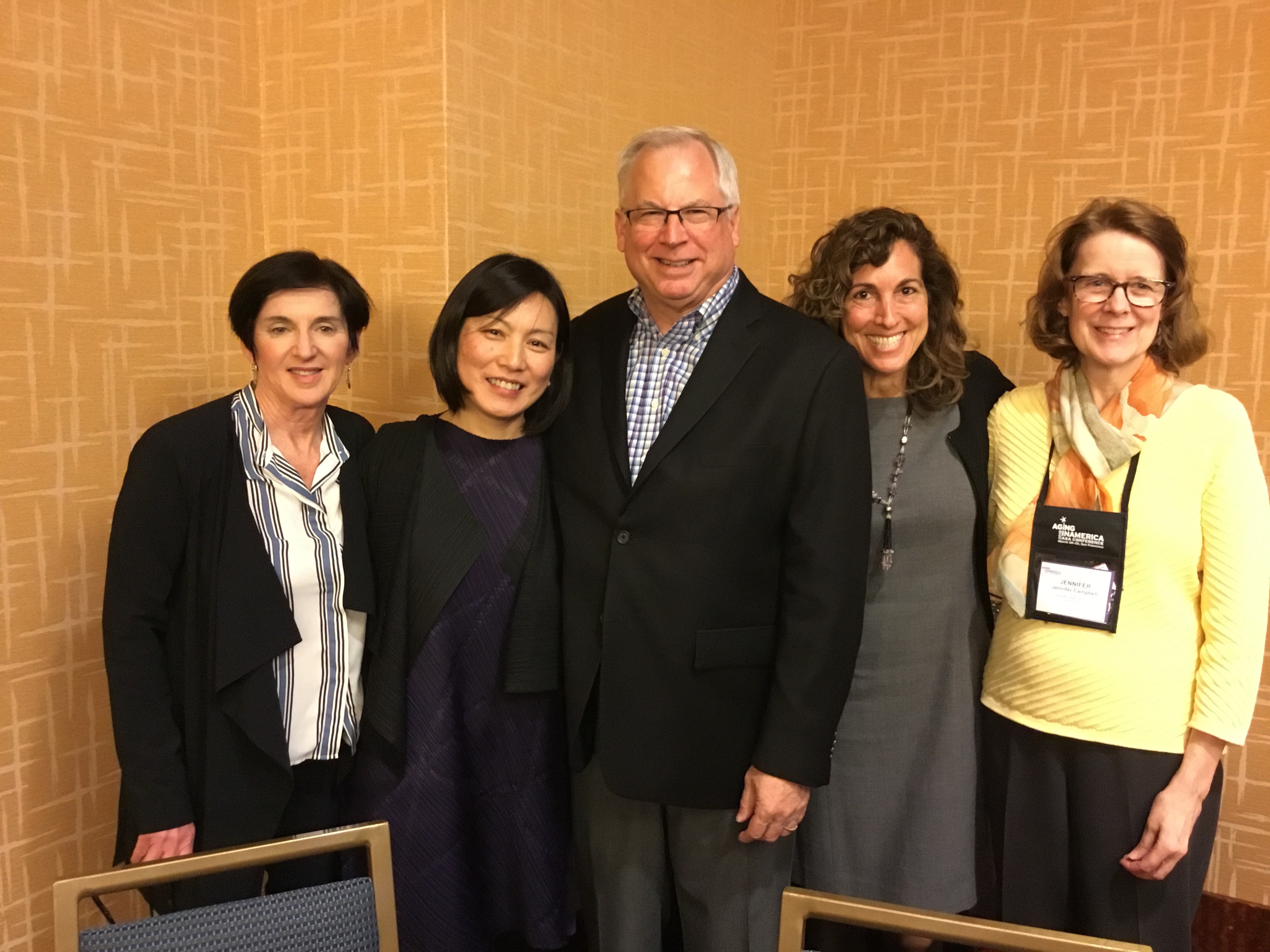AARP Hearing Center
Building an Age Friendly U.S.: Good Ideas Have No Borders
By Kim Sedmak, March 27, 2018 06:34 PM

The American Society on Aging’s (ASA) annual conference got off to a roaring start Monday as an expected 3,000 attendees from around the world descended upon San Francisco to foster greater collaboration and sharing of advances in supporting an ever-expanding aging population.
The ASA Chairs’ Lecture, and one of the conference’s first sessions, featured Stephanie Firestone, Senior Strategic Policy Advisor for AARP International, along with four renowned experts on age friendly issues.
Moderated by John Feather, CEO of Grant Makers in Aging, the distinguished panel identified best practices and lessons learned from how other countries are implementing ways to create age-friendly communities. The findings are based on the World Health Organization’s (WHO) designated eight areas for measuring a community’s age friendliness, from outdoor spaces and transportation to housing and social engagement.
It was standing-room only as Feather jump-started the session by recognizing the need for a new initiative within the Age Friendly movement. “We need to bridge the international gap in learning what is happening in other countries around the world so we can move more rapidly in adopting new policies and make impactful change,” he said.
In an opening “lightening round” of best-practice sharing by the conference panel, Jane Barratt, Secretary General at the International Federation on Aging, provided a simple yet powerful example concerning social inclusion of older adults in society and the natural respect that goes with it. She recently asked a 90 year-old man living in the U.K. what would make his life easier. He stated simply, “People need to speak more slowly.” Barratt went onto to say, “Not one key organization is leading the way globally.”
All agreed that culture, financial mechanisms needed to fund age friendly initiatives, and language barriers can present challenges in identifying and implementing best practices. “What might work in Japan or the Philippines won’t work in Nepal,” stated Emi Kiyota, President and Founder of Ibasho.
Firestone emphasized the importance of communities including older adults from the very beginning when planning for an age friendly city. She cited the practices of Melville, Australia, a suburb of Perth, where the lead strategic planner created an access advisory panel. Made up of older adults with varying abilities, the panel is part of all key decision-making concerning community events, municipality changes, and overall city planning. Firestone said, “This could be a model adopted everywhere,” and panel member Jennifer Campbell added, “This is very much like the disability community’s motto: Nothing about us, without us.”
According to Barratt, the other larger issue facing the Age Friendly movement is recognizing that ageism lives among decision makers, from government to the for-profit sector. “We need champions who can explain to the business community the economic value in designing for all ages,” she said.
In building an age-friendly community, Firestone acknowledged the critical need in reaching all stakeholders in a local community. “You need to include every sector of the community, even when they don’t understand why they need to be involved, and use specific ways to communicate to these sectors,” she said. “Different sectors use different terms. It takes a longtime.”
Barratt concluded, “We need to make lots of noise around the world and keep raising awareness and passion for these ideas. Whether it impacts five people or 500,000, everything makes a difference.”
Capturing the importance of such efforts, fellow panelist Kiyota noted, “Global aging is here to stay.”
This blog is part of a daily online report from ASA, where AARP’s policy and research experts and thought leaders are sharing fresh perspectives and insights, identifying innovative trends, and providing cutting-edge data, research and commentary. Read more here.































































